2020 Dodge Charger SRT Hellcat Widebody Review: The Friendly Demon

I’m in the latest member of the family for 2020, the Dodge Charger SRT Hellcat Widebody. The weather is doing that fall thing of being completely unpredictable, and I’m in the fastest and most powerful mass-produced sedan in the world. Awesome.
This should be scary. It certainly looks like it: I’ve seen enough horror movies to know this is exactly where the knife-wielding lunatic makes their dramatic reveal. If Mike Oldfield’s “Tubular Bells” comes on the stereo, I’m abandoning ship. Surely the friendly folks at FCA would understand.
707 horsepower. 650 pound-feet of torque. Rear-drive only. If the spec sheet for this bad boy reads like a recipe for scares and wickedness, well, that’s the point. It’s right there in the name, after all. Thanks to the widebody kit for 2020, however, it’s approachability reminds me of another member of the afterlife—especially in this White Knuckle paint. “Casper” doesn’t have the same ring to it as “Hellcat” though. Whatever name you call it, the Charger is a friendly devil of a car, not-so-gently whispering into your ear, but able to deliver on its promises.
So. Much. Power.
The Hellcat’s performance stats are well-known at this point, the product of a wicked-sounding supercharged V8. Even a portly curb weight of 4,586 lb (2,080 kg) doesn’t dull the delivery of this savage engine. The supercharger multiplies power without the lag of turbos, meaning power is available anywhere in the range at a moment’s notice.
Dodge quotes a quick 3.7-second run to 60 mph (96 km/h), no doubt courtesy of the Charger’s available launch control. I can’t get within a half-second of that. I’ll blame the greasy roads of early autumn, but launches aren’t the Hellcat’s forte even in perfect weather. Funnelling that much power to just two driven wheels, even ones wrapped in 305-section tires, is never going to match up to something like, say, the BMW M8 Gran Coupe.
SEE ALSO: 2020 BMW M8 Competition Gran Coupe Review: More to LoveFAST FACTS
| Engine: | 6.2L V8 Supercharged |
| Output: | 707 hp, 650 lb-ft |
| Transmission: | 8AT, RWD |
| US fuel economy (MPG): | 12/21/15 |
| CAN fuel economy (L/100KM): | 19.0/11.5/15.6 |
| Starting Price (USD): | $71,490 (inc. dest.) |
| As-Tested Price (USD): | $83,665 (est, inc. dest.) |
| Starting Price (CAD): | $86,940 (inc. dest.) |
| As-Tested Price (CAD): | $99,055 (inc. dest.) |
Once the Hellcat is on the move is where it really shines. In fourth gear on the highway? Gun it and watch the speedo count up faster than a Black Friday cash register. I drove the Porsche Taycan Turbo S the same week I had the Hellcat. The Dodge felt every inch its equal from 50 mph (80 km/h) to … well, let’s just say more than that.
SEE ALSO: Why the Taycan is the Best Porsche to Drive From Toronto to Ottawa and BackThe eight-speed auto handles the power very well. Nudge the shifter to the left and you can dictate the shifts, either with the shifter itself or column-mounted shift paddles. It’s fun, especially to coax out more of that V8 soundtrack, but the mapping works well enough when left on its own, which is what I ended up doing most of the time.
Exploitable, if you have restraint
For 2020, Dodge has treated the Charger to the same widebody approach as the two-door Challenger. The swollen arches add 3.5 inches (90 mm) to the width of the Charger, allowing for those huge tires at all four corners. I’d call it a success, as the LX cars have always looked too narrow to my eyes. Now, seeing one without the flares looks wrong. The rest of the shape still works too, especially in the two-tone monochrome look here.
Maybe it’s the extra rubber and wider track. Maybe it’s the added length and different weight balance versus the Challenger. Whatever it is, the Charger is approachable and predictable when pushed. It telegraphs its movements clearly, letting you know exactly how much attitude the rear axle is giving. The steering is nice and hefty too, but not overbearing. It requires a considered response, which is good, because there’s a lot of car here. A darty nose would be a disaster.
Case in point: early in the week, we’re on my preferred “testing” on-ramp. Rounding the corner in fourth gear, with only a bit of lock still applied, I squeeze the throttle more aggressively than I’ve dared before. The big 305-section rear tires ever so slightly smear outwards, rotating the nose a few degrees. As soon as it’s begun it’s over, a quick flick of the wheel keeping the Charger in check. But it’s all the wiggle I need to remember this is the fastest, most powerful four-door in the world.
The excellent Uconnect system includes a whole bunch of SRT-exclusive bits to let you tailor the experience too. Setting the suspension to its softest setting yet cranking the traction and transmission to track is the best mix for me. The Bilstein adaptive dampers still provide a firm ride here, but with a softer edge that makes the Hellcat more than acceptable around town. The wide front rubber will take any excuse to tramline, but the more frequent adjustments serve as a reminder that this is a beast that needs to be let off its chain from time to time.
Living with the devil
Ram might have just shoved this engine in its pickup to create the Raptor-hunting TRX (AutoGuide.com first drive coming next week), but the Charger is the real dinosaur here. I mean no disrespect: even Dodge will admit the car is no spring chicken. But the Charger is also an old-school form factor. Full-size sedans are about as popular as all-you-can-eat buffets in 2020. People want SUVs, and if you want one with this wild heart, you’ve got either the Jeep Grand Cherokee Trackhawk or the 2021 Dodge Durango Hellcat to choose from.
But the big-bodied four-door still affords its occupants plenty of space. The seats up front look like leather-wrapped La-Z-Boys, complete with heating and cooling capabilities. They’re plenty comfy, though I’d appreciate some extra bolstering for hard cornering. My tester’s optional Carbon & Suede pack throws in some needed eye-candy too, with the weave on the dash and the soft-touch material on the headliner and A-pillars. Otherwise, this is largely the same interior you’ll find in a regular Charger for far less than half the asking price of our tester. This isn’t news for potential buyers of course—they’re in the Hellcat market for the Hellcat engine—but it’s important to note. An $85,000 interior this is not.
Another reason you might opt for either of the 707-hp SUVs is rear seat space. The Charger is a large sedan, but second-row accommodations are merely adequate. The folks you stick back there will slide around even more when the road gets twisty, too.
And then there’s the fuel economy. You expect it to be bad, and even setting that bar low, it’s a little shocking. How’s 12 mpg around the city sound (19.0 L/100 km)? Flip that number around for 21 mpg on the highway (11.5 L/100 km), but you’ll need monk levels of self-control to maintain that. My week averaged right around that city figure, with a fair amount of highway shleps mixed in. If you know any oil barons, make sure you’re on their Christmas card list.
Verdict: 2020 Dodge Charger SRT Hellcat Widebody Review
Is the Hellcat the definition of excess? Hell yes. It’s as subtle as a pie to the face, if that pie were full of ghost peppers and giant neon signs.
That doesn’t make sense because the Dodge Charger SRT Hellcat doesn’t either. Full-throttle lunges in it rewires your brain, eliminating print-appropriate words and leaving only stunned, delirious laughter. It offers supercar levels of straight-line thrust, at a price anywhere from two to ten times less. The Widebody adds another level of control on top, while also improving the looks. I believe that’s called a win-win. The profligate fuel usage and gussied-up rental car interior can’t detract from a sensational performance—and a bit of a bargain, comparatively speaking.
It turns out there’s nothing to fear here after all.
Become an AutoGuide insider. Get the latest from the automotive world first by subscribing to our newsletter here.
LOVE IT
- That magnificent engine
- Surprisingly friendly handling
- Seriously, that engine
LEAVE IT
- La-Z-Boy seats
- Needs a personal oil field
- Nearly triple the price of a base Charger

Kyle began his automotive obsession before he even started school, courtesy of a remote control Porsche and various LEGO sets. He later studied advertising and graphic design at Humber College, which led him to writing about cars (both real and digital). He is now a proud member of the Automobile Journalists Association of Canada (AJAC), where he was the Journalist of the Year runner-up for 2021.
More by Kyle Patrick



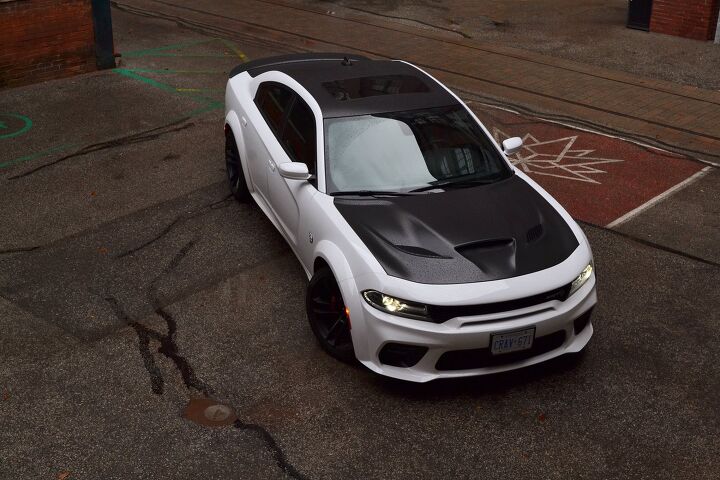
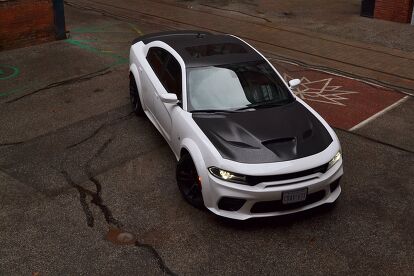










































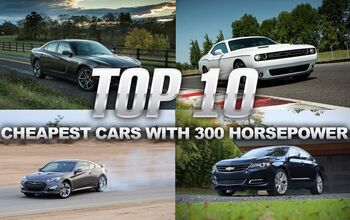
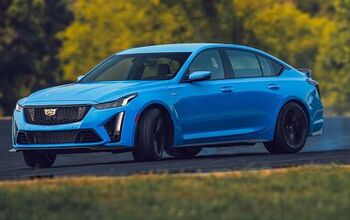
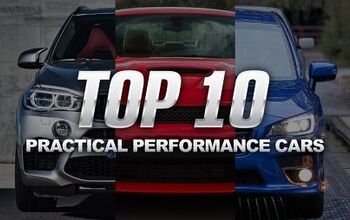
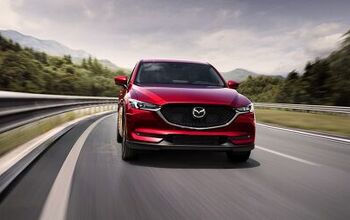
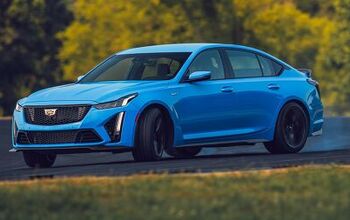










Comments
Join the conversation